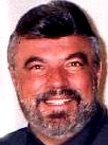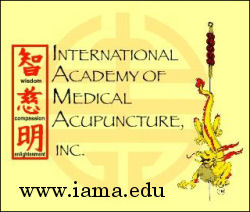Acupuncture & TCM Articles

Acupuncture Articles
by John A. Amaro L.Ac., Dipl.Ac.(NCCAOM), DC
 Dr. Amaro is an internationally known author, lecturer and practitioner beginning his practice of Acupuncture and Chiropractic in 1971. He has led 13 diplomatic Acupuncture study tours of The People's Republic of China escorting more than 500 doctors and practitioners. He has personally studied Acupuncture in nine separate Asian nations. Dr. Amaro is an internationally known author, lecturer and practitioner beginning his practice of Acupuncture and Chiropractic in 1971. He has led 13 diplomatic Acupuncture study tours of The People's Republic of China escorting more than 500 doctors and practitioners. He has personally studied Acupuncture in nine separate Asian nations.
He has received Certification in Acupuncture through the Columbia Institute of Chiropractic in 1973. This was one of the first Acupuncture postgraduate education programs for physicians in North America commencing in 1972.
He has been certified by the Waseda Acupuncture College in Tokyo, Japan in 1974 and graduated from the Chinese Medical Institute, Kowloon, China in 1976. He had previously taken postgraduate studies at the Tai Chung Medical School Taipei, China 1973.
How I Almost Blew It
John A. Amaro L.Ac., Dipl.Ac.(NCCAOM), DC
In the November 4, 1994 issue of Dynamic Chiropractic, I wrote the article, "The First 50 Words." In that article, a specific case history was illustrated concerning a gentlemen who suffered with a severe disabling condition of being unable to swallow. It was discovered during consultation that he had experienced an emotional trauma of guilt and grief: when addressed through acupuncture, the dysphagia suddenly resolved. The jist of the article was to listen with great interest to what patients tell us during consultation, especially the first 50 words. To do so will often enlighten us on the causative factors of their problem, regardless of what they may be. If for some reason you were careless enough to not clip this article for future reference, send a stamped self-addressed envelope and we will see you receive it: no excuses, or questions asked.
Those of us who are involved with acupuncture realize the incredible potential for discovering the underlying cause of a chronic problem through the emotions revealed in the consultation and within the usual course of a patient's treatment. Recently I experienced a case which clearly illustrates the vast importance of listening to a patient, since I just about blew it!
The patient, a 59-year-old female, could be heard outside the office even before she entered the building with her loud, incessant coughing. While sitting in the office waiting her turn, her coughing was aggravating those around her, and I couldn't help notice that the other patients in the reception room were fidgeting and finding seats on the opposite side of the room from her. One woman with two small children actually told the receptionist she would reschedule for another time, obviously not wanting to be in the same room with what was apparently a very unhealthy situation. When I finally was able to see the patient, I had already been asked at least four times, "What in the world is wrong with her?"
During consultation, which was very difficult to conduct due to her inability to speak as a result of continuous coughing, I learned she had suffered this problem for four and one half years. She had sought the services of a number of physicians, all to no avail. She had been prescribed a variety of medications which offered no help. She attempted to explain that her life, in all aspects of social, family, and spiritual, was in shambles, and she detailed her condition through gasps and the incessant, continuous, hacking cough.
When I inquired how and when the condition began, she related the coughing began when she and her husband left San Francisco on their drive home to Phoenix from vacation. When I asked what had happened in San Francisco which could have contributed to this, she said San Francisco had always been her favorite city in the world which she could not get enough of. She loved it! However, she related, on the last last trip (when the coughing began), "I was so disappointed, I felt as though my best friend had died. The city just wasn't the same, Fisherman's Wharf was almost unrecognizable, many of the old restaurants and famed landmarks were no longer there. The city had changed so much I actually cried." Her personal perception of her favorite city created so much grief, she had literally become sick.
She went on to say, "But the San Francisco incident wasn't anything to what I experienced in La Jolla. Just before we visited San Francisco, we had visited my daughter who had been traumatically divorced 10 years earlier, leaving her to raise two small children. Finally, she met 'Mr. Right,' who was the love of her life. She is now in seclusion, due to her now having become a victim of a stalking, and it was obvious the children had experienced physical, emotional and sexual abuse at the hands of this man." The experience was obviously devastating as what appeared to be the perfect husband turned into a living nightmare. The patient only learned of this situation on her visit.
By the time she arrived in San Francisco, her grief had literally become pathologic, and being unable to appreciate the city, she suddenly manifested into a constant coughing, on-going now for over four years.
The actual treatment was pretty easy, as I simply treated LU 1 (the great letting go point), the alarm point for the lung which can be used for any condition affecting respiration, cough, etc. I also conducted an electronic meridian examination (ryodoraku) to determine the status of the meridians, and was not shocked to find an extremely elevated lung meridian which would require utilizing the sedation point (LU 5) at the elbow. As this point is also the water point which is incredibly effective for any dry conditions of the lung, it stood to reason the dry, hacking cough could be resolved by the utilization of this point by literally moisturizing the lung.
On her second visit which was two days later, she exclaimed she had not coughed at all since about two hours after her first treatment. I followed up with this patient twice a week for two additional weeks, then once a week for two more weeks. In essence she had not coughed for one month. The patient was elated, as was the person who referred her. Once again I began seeing a host of unusual conditions all referred by her network of friends and relatives to experience acupuncture.
Several weeks following her last visit, she came to the office coughing incessantly. She stated she had a severe bout with the flu and since that time she had begun coughing again. With full confidence, I began to treat her in the identical fashion which we had been so successful just weeks earlier.
This time things were definitely different. I had now given her six treatments to no avail, she continued to cough as if she had never come in. Following her eighth treatment, it was obvious this patient was not responding and it was also obvious she was about to seek another form of care since acupuncture was not working. The treatment was a failure. How could it have alleviated a four-year problem in one treatment and now after eight treatments no effect whatsoever?
Talk about "blowing it!" I had just failed with a case which scores of people were very aware of. Then I asked, "Now your cough is very dry and hacky?"
"No, this cough is different with lots of phlegm," she replied.
I had never thought to ask, I just assumed. With this knowledge I conducted a new examination which I should have done long before, because when I did, I discovered her lung meridian which originally had been elevated, was now depressed as a result of her flu. This required me to use the tonification point instead of the sedation point. It must also be borne in mind, the tonification point of the lung meridian is also the Earth point which will control too much moisture, as is the case of a wet, productive, cough.
After one treatment with this new found knowledge the cough stopped. It has been three months since the cough stopped and she has not had any recurrence whatsoever.
It's a fact of life that if you are going to fast in your car you apply the brake; if you are going to slow you apply the accelerator. The same is true of acupuncture with stimulation of the tonification or sedation points. It is vitally important to make special use of the Water points in inflamed, dry conditions, whereas the Earth points may eliminate too much water. Using the wrong pedal in your vehicle may cause an accident; using the wrong point in acupuncture may very well do the same.
The bottom line is: Always listen to what your patient is telling you. It may make the difference between success and failure.
|
